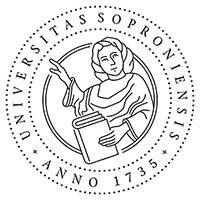Kamishibai: An intangible cultural heritage of Japanese culture and its application in Infant Education
DOI:
https://doi.org/10.17165/TP.2017.1-2.2Abstract
In the field of art education, it is imperative to use new and innovative methods to study visual culture, and to adopt multicultural and intercultural approaches to interpret art in different cultures. It is interesting to study the way in which the intertextual method (the interrelationship between texts, whether written, oral, past or present; the implicit or explicit connection between a set of texts forming a context which conditions the understanding and development of the discourse) can be employed to interpret art from a western or eastern perspective.
The kamishibai art form should be integrated into pre-school and elementary school curricula to promote reading. This proposal goes beyond simply understanding a text with images. The focus is on how a text can be performed theatrically and involve the participation and interaction of children as protagonists in the process.
We start by introducing the concept of kamishibai, including its origins and different stages of evolution throughout history until the present day. Then, we discuss the potential new roles that contemporary kamishibai could assume in the educational context.
Finally, we present an educational proposal to promote its use in early childhood education. We consider that the development of artistic interpretation, the potential value of a text when performed theatrically facilitates the introduction of multiculturalism to children.
References
Atkinson, A. & Oswald, R. (2011). Multicultural literature and Response: Affirming diverse voices. Santa Barbara, CA: ABC-CLIO.
Banks, J. A. (2004). Multicultural education: Historical development, dimensions, and practice. In Banks, J. A., & Banks, C.A.M. (Eds.) Handbook of research on multicultural education (2nd Ed. P. 3–29). San Francisco, CA: Jossey-Bass DOI: https://doi.org/10.2307/1167339
Bologna Children´s Book Fair. [Online]: http://www.bookfair.bolognafiere.it/en/home/878.html [Accessed: 2nd January 2017]
De la Casas, D. (2006). Kamishibai Story Theater: The Art of Picture Telling. Westport, CT: Libraries Unlimited. Ñaque, 47, Pp. 24–26.
Dorson, L. & Jordan, P. (2012). School Arts: Looking Beyond. May/June. Volume: 111. Issue: 9. Pp. 36–37.
Fujita, H. Stallings, F. Wright, H. Sakurai, M. (2008). Folktales from the Japanese Countryside. Westport, CT: Libraries Unlimited.
Gates, P. S. & Mark, D. H. (2006). Cultural Journeys. Inc: Lanham, MD: Scarecrow Press, Inc. Genette, G. (1997a). Paratexts: Thresholds of interpretation (Literature, culture, theory). New York: Cambridge University Press.
Genette, G. (1997b). Palimpsests: Literature in the Second Degree. Lincoln: University of Nebraska Press.
IICLO (International Institute for Children’s Literature). [Online]: http://www.iiclo.or.jp/f_english/index.html [Accessed: 4th November 2016].
IKAJA (The International Kamishibai Association of Japan) Nº 1–4. [Online]: www.geocities.jp/kamishibai/index-e.html [Accessed: 10th December 2016].
Kamishibai for Kids. [Online]: http://www.kamishibai.com/ [Accessed: 4th November 2016].
Kristeva, J. (1984). Revolution in Poetic language. New York: Columbia University Press.
Norton, D. E. (2009). Multicultural children´s literature: Through the eyes of many children. Boston, MA: Pearson Education.
Orbaugh, S. (2014). Propaganda Performed: Kamishibai in Japan's Fifteen-Year War. Boston, MA: Brill Leidon. DOI: https://doi.org/10.1163/9789004249448
Paatela-Nieminen, M. (2008). The Intertextual Method for Art Education Applied in Japanese Paper Theatre – a Study on Discovering Intercultural Differences. International Journal of Art & Education. Blackwell Publishing Limited. Vol. 27, Issue 1. February 2008. Pp. 91–104. DOI: https://doi.org/10.1111/j.1476-8070.2008.00561.x
Paatela-Nieminen, M. (2000). On the threshold of intercultural Alices: Intertextual research on the illustrations of the English Alice in Wonderland and German Alice im Wunderland in intermedia research in the field of art education. Doctoral thesis. Helsinki: University of Art and Design.
Asian Cultural Centre for Unesco. Report. Fifth Experts Meeting on Regional Co-operation in Unesco Cultural Activities in Asia and the Pacific. Tokyo and Hakone. 3–7 March, 1981. Tokyo (Japan): Asian Cultural Centre for Unesco. Nº 6. Fukuro-machi, Shinjuku-ku, 162. March, 1981.
Rodari, G. (2008). Gramática de la fantasía: Introducción al arte de inventar historias. Buenos Aires: Ediciones Colihue.
Sabnani, N. (2014). Kaavad Traditions of Rajasthan - A portable pilgrimage. New Delhi: Niyogi Books.
Tsunekatsu, S. (2005). Media to shite no kamishibai. Series: Nihon jidō bunkashi sōsho; 38: Kyūzansha, Tōkyō.
Ubersfeld, A. (1989). Semiótica teatral. Murcia: Catedra. Universidad de Murcia.
Downloads
Published
Issue
Section
License
Copyright (c) 2017 Ana Marqués Ibáñez

This work is licensed under a Creative Commons Attribution-NonCommercial-NoDerivatives 4.0 International License.












